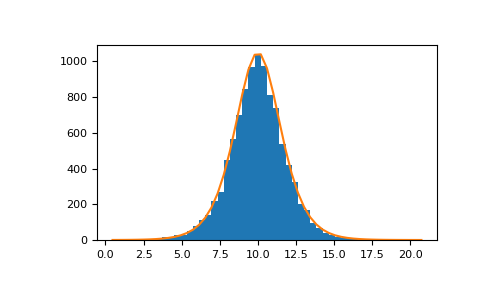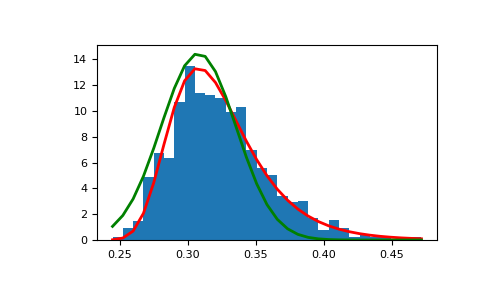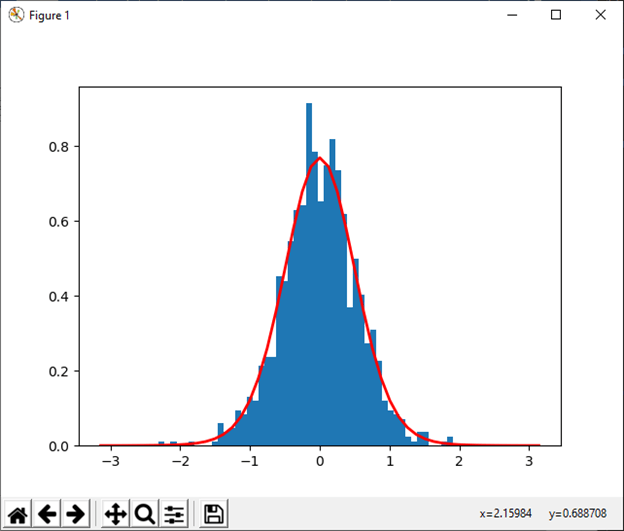

It returned a boolean array with only True and False values. Out array([False, False, True, False, True, False, True, True, False,įalse, False, False, False, True, True, False, False, False,
NUMPY RANDOM CODE
To illustrate this, let us execute the code used to subset the rand_arr, i.e. Python NumPy generates an anonymous array of True and False values which is then used to subset the array. When an array is being sliced using the logical operator, We then try to subset it with values which are greater than 30 using the logical operator >. Here, we create an array with the name rand_arr with 20 random values. If we try to create an array of different types like the one mentioned below, the resulting NumPy array will contain a single type only. It’s either an array of integers, floats or booleans and so on. Python NumPy can do this easily because it assumes that array can only contain values of a single type. Python NumPy works with arrays as if they are scalars. The first observation in PCR array was calculated by dividing the first element in n_put_vol by the first element in the n_call_vol array and so on. This time it worked, and calculations were performed element-wise.

Here, we have two arrays n_put_vol and n_call_vol which holds put and call volume respectively. To do this, we use array() function from the NumPy package and create the Python NumPy version of put_vol and call_vol lists.Īrray() Let us execute the same operation using a Python NumPy array. A way more elegant solution is to use Python NumPy arrays, an alternative to the regular Python list. However, doing so is inefficient and tiresome too. We can do this by iterating over each item in lists and calculating the PCR for each day separately.
NUMPY RANDOM HOW TO
Unfortunately, Python threw an error while calculating PCR values as it has no idea on how to do calculations on lists. TypeError: unsupported operand type(s) for /: 'list' and 'list' We then compute the PCR by dividing put volume by call volume as illustrated in the below script: put_vol = # Put volume in lacsĬall_vol = # Call volume in lacs Say, we have put and call options volume (in Lacs) stored in lists call_vol and put_vol respectively. But lists lack an important feature, carrying out operations over an entire collection of elements in an efficient manner.įor example, consider a case where we calculate PCR (Put Call Ratio) for the previous 5 days. NumPy ArraysĪ Python list is a pretty powerful sequential data structure with some nifty features like index sub-setting and traversal. We will be using this form of alias for all the examples in this section. Here, the NumPy library is imported with an alias of np so that any functionality within it can be used with convenience. The de facto way of importing is shown below: import numpy as np Once installed we can use it by importing into our program by using the import statement.
NUMPY RANDOM INSTALL
Note: If we use the Python or iPython console to install the NumPy library, the command to install it would be preceded by the character!

One point to note is that if we use the Anaconda distribution to install Python, most of the libraries (like NumPy, pandas, scikit-learn, matplotlib, etc.) used in the scientific Python ecosystem come pre-installed. NumPy is not a part of the Python Standard Library and hence, as with any other such library or module, it needs to be installed on a workstation before it can be used.īased on the Python distribution one uses, it can be installed via a command prompt, conda prompt, or terminal using the following command.

NumPy, an acronym for Numerical Python, is a package to perform scientific computing in Python efficiently.


 0 kommentar(er)
0 kommentar(er)
